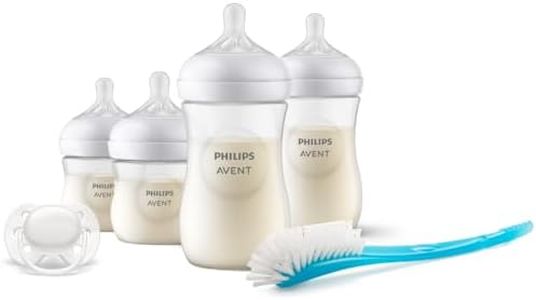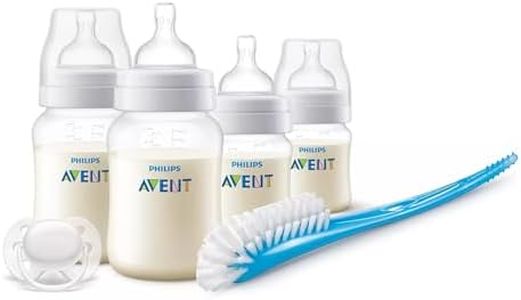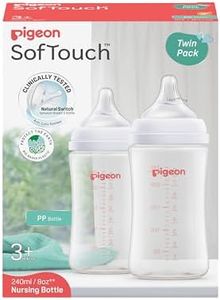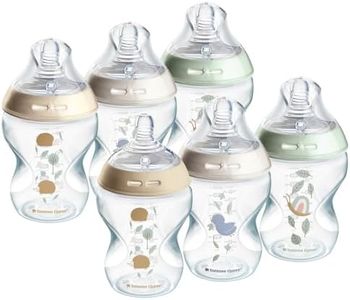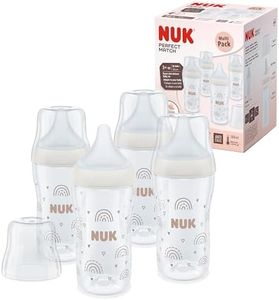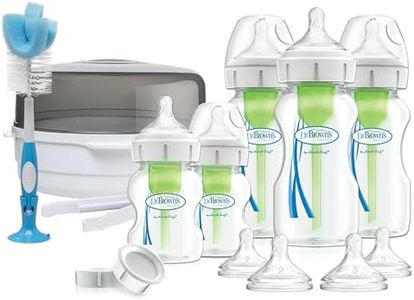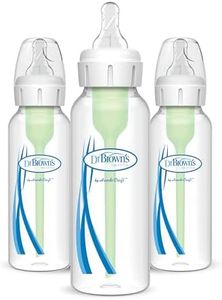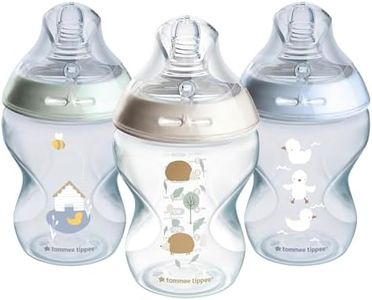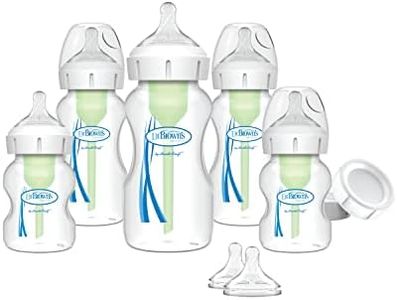We Use CookiesWe use cookies to enhance the security, performance,
functionality and for analytical and promotional activities. By continuing to browse this site you
are agreeing to our privacy policy
10 Best Bottles For Newborns
From leading brands and best sellers available on the web.By clicking on a link to a third party's website, log data is shared with that third party.
Buying Guide for the Best Bottles For Newborns
Choosing the right bottle for your newborn can greatly impact their feeding experience and comfort. It's important to find a bottle that suits your baby's needs as well as your own preferences for ease of use and cleaning. By understanding the key features and how they affect feeding, you'll be better equipped to pick a bottle that helps your baby feed comfortably and happily.Bottle MaterialBottle material refers to what the bottle is made from, such as plastic, glass, silicone, or stainless steel. This spec is important because each material has different qualities in terms of weight, durability, safety, and maintenance. Plastic bottles are lightweight and less likely to break if dropped, but make sure they are BPA-free for safety. Glass bottles are heavier and breakable, but do not absorb odors or stains and are easy to keep clean. Silicone bottles are flexible, lightweight, and shatterproof, though less common. Stainless steel bottles are durable but can be heavier and more expensive. When picking a material, think about whether you'll prioritize ease of use, safety from chemicals, or ease of cleaning. For instance, if you’re often on the go, a lighter, shatterproof material might be best; for home use and easy cleaning, glass might be preferable.
Nipple Shape and FlowNipple shape and flow describe the design of the bottle's teat and how easily milk comes out. These are important because they affect how naturally your baby can latch on and how easily they feed without choking or getting too much air. Nipple flow is typically categorized as slow, medium, or fast; newborns usually need slow flow to mimic breastfeeding and prevent overfeeding. Nipple shapes can range from more traditional, narrow designs to wide, breast-like nipples that can help with transitioning between breast and bottle. To pick the right one, observe your baby's feeding habits—if they are struggling with regular nipples, try a more natural-shaped one, and always start with a slow flow for newborns, moving up only if your baby seems frustrated or takes too long to finish a bottle.
Anti-colic FeaturesAnti-colic refers to special designs in bottles that help reduce the amount of air your baby swallows during feeding, which can help prevent gas, fussiness, and discomfort. These features may include special vents, valves, or internal tubes inside the bottle. Bottles may range from no anti-colic design (basic bottles), to simple vented nipples, to advanced systems with extra parts. If your baby shows signs of gassiness or spit-up, an anti-colic bottle may provide relief. If not, a simpler bottle might suffice, which can be easier to clean and assemble.
Bottle Size (Capacity)Bottle size indicates how much milk the bottle can hold, typically measured in ounces or milliliters. This is important because newborns consume much smaller amounts of milk than older babies. Bottles usually come in small sizes (around 4-5 ounces) for newborns, and larger sizes (8-9 ounces or more) for older infants. Using a smaller bottle at first can help prevent waste and make feeding more manageable, then transition to larger bottles as your baby's appetite grows.
Ease of CleaningEase of cleaning is about how simple it is to wash and sterilize the bottle and all its parts. Bottles with multiple parts (like special anti-colic systems) can take more time to disassemble and clean, while basic bottles are easier due to fewer pieces. Choosing bottles that are dishwasher safe or have wide necks makes cleaning easier. Consider your daily routine: if you'll be cleaning bottles frequently, a design with fewer parts and a wide opening can save effort and ensure better hygiene.
Compatibility with AccessoriesThis refers to whether the bottle fits other products like breast pumps, sterilizers, or handles for self-feeding. Some bottles have universal sizing or adapters, making them compatible with a range of accessories, while others are more specialized. If you plan to pump and store milk in the same bottles, or use bottle warmers regularly, check that the bottle works smoothly with those accessories to make your feeding routine easier.
